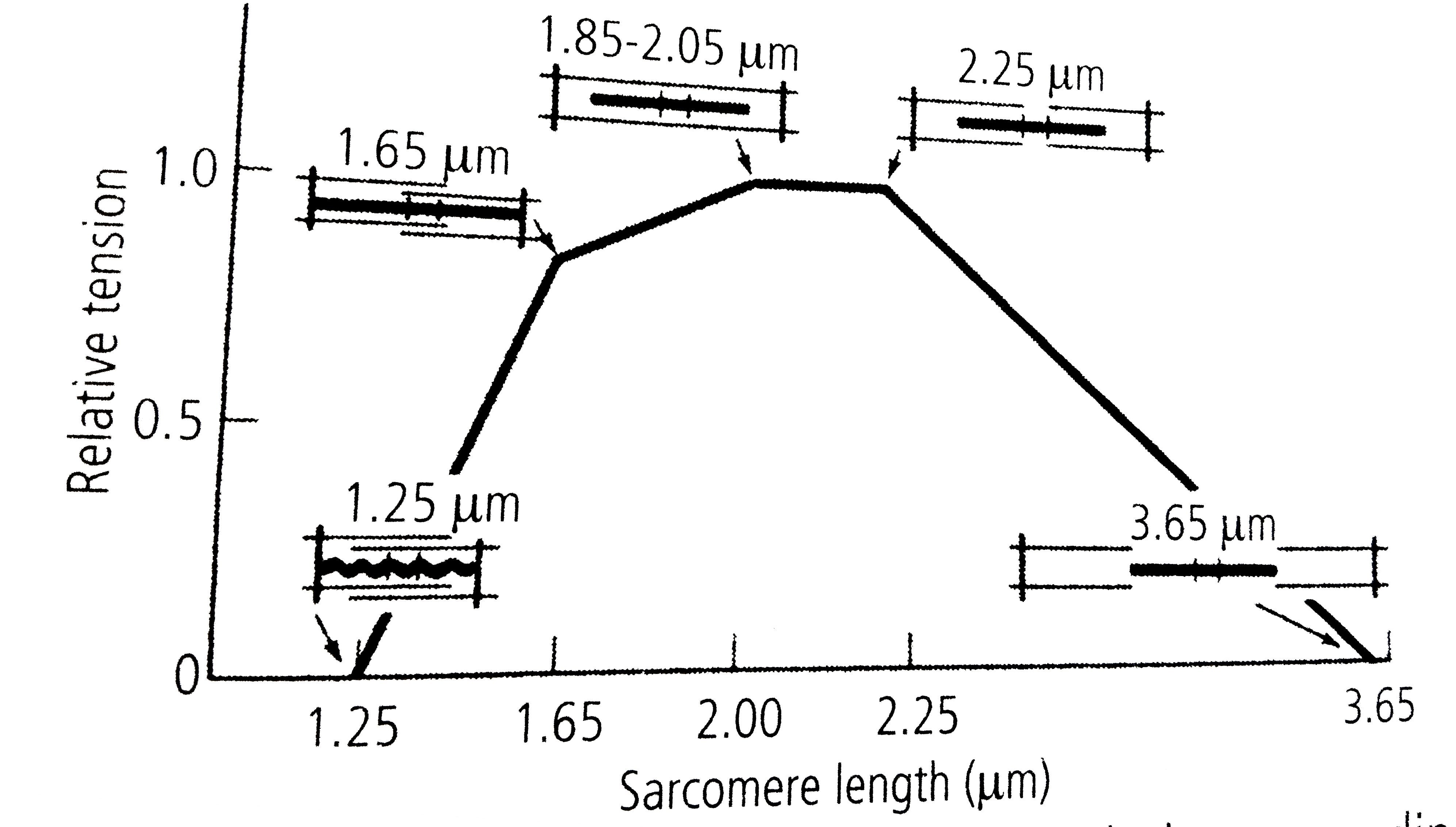Myosin filaments are localized in
Z band
H band
A band
None of the above
The correct Answer is:C
To answer the question "Myosin filaments are localized in," we can follow these steps:
1. Understanding Myofibrils: Myofibrils are the basic rod-like units of a muscle cell (muscle fiber) that play a crucial role in muscle contraction. They are composed of two types of filaments: thick filaments and thin filaments.
2. Identifying the Types of Filaments: The thick filaments are primarily made up of myosin, while the thin filaments are primarily composed of actin.
3. Differentiating Between Bands: Myofibrils exhibit a striated appearance due to the arrangement of these filaments into alternating light and dark bands:
- The I-band (light band) contains actin filaments and is also known as the isotropic band.
- The A-band (dark band) contains myosin filaments and is referred to as the anisotropic band.
4. Locating Myosin Filaments: Since myosin filaments are part of the thick filaments, they are specifically located in the A-band of the myofibrils.
5. Conclusion: Therefore, myosin filaments are localized in the A-band.
Final Answer:
Myosin filaments are localized in the A-band.
---
- The I-band (light band) contains actin filaments and is also known as the isotropic band.
- The A-band (dark band) contains myosin filaments and is referred to as the anisotropic band.
Myosin filaments are localized in the A-band.
Topper's Solved these Questions
- BOOK - CENGAGE BIOLOGY ENGLISHCHAPTER - LOCOMOTION AND MOVEMENTEXERCISE - ARCHIVES12videos
LOCOMOTION AND MOVEMENT
- BOOK - CENGAGE BIOLOGY ENGLISHCHAPTER - EXCERETORY PRODUCTS AND THEIR ELIMINATIONEXERCISE - ARCHIVES22videos
EXCERETORY PRODUCTS AND THEIR ELIMINATION
- BOOK - CENGAGE BIOLOGY ENGLISHCHAPTER - MINERAL NUTRITIONEXERCISE - ARCHIVES39videos
MINERAL NUTRITION
Similar Questions
Myosin myofilaments are
View SolutionSelect the total number of false statement from the following
(i) The globular head is an active ATPase enzyme and has binding sites for ATP and active sites for Myosin.
(ii) Each Myosin filament is also a polymerized protein
(iii) Many monomeric proteins celled Meromyosins constitute one thick filament.
(iv) Each meromyosin has two important parts, a globular head with a short arm and a tail, the former being called the heavy meromyosin (HMA) and the latter, the light meromysin (LMN).
(v) The HMM component, i.e., the head and short arm projects outwards at regular distance and angle from each other from the surface of a polymerized myosin filament and is known as cross arm
(a) 5
(b) 4
(c) 2
(d)1View Solution
Knowledge Check
- Question 1 - Select One
The given graph shows length-tension curve for a typical vertebrate sarcomere.

By analysing the graph, what can you deduce regarding the muscle contraction?
(i) Neither the myosin filaments nor the actin thin filaments change in length when a sarcomere shortens or is stretched. Instead, it is the extent of ocerlap between actin and myosin filaments that changes.
(ii) The total tension produced by a sarcomere is proportional to the total number of cross-bridges that can interact with actin filaments, and this number in turn is proportional to the amount of of overlap between thick and thin filaments.
(iii) The tension produced by the muscle is maximal when the overlap between thick and thin filamentss allows the largest number of myosin cross-bridges to bind to actin.
(iv) Tension drops off with increased lenght, because the thick and thin filaments overlap less and fewer cross-bridges can bind.
Tension drops off with decreased length, because thin filaments at the two ends of the secromere begin to collide with each other, preventing further shortening.A(i) OnlyB(i),(iii) and (iv)C(i),(iii),(iv) and (v)D(i),(ii),(iii),(iv) and (v)
Read the following statements and select the correct option :
I. In the skeletal muscles fibre, large number of myofilaments are arranged in the sarcoplasm.
II. The central part of an anisotropic band where the only thick , filament is present and thin filament is absent is called 'A' band.
III. In the resting state , a tropomyosin protein masks the active b binding sites for myosin on the active filaments .
IV. The junction between a motor neuron and the sarcolemma of the muscle fibres is called motor-end plate.View SolutionThe myosin myofilament can be cleaved into a head and a tail piece. All of the following are accurate in describing the position of myosin in a sacromere except
(i) A-band is the length of a myosin myoilaments
(ii) A-band contains thin and thick myofilaments
(iii) A-band does not include actin-binding sitesView SolutionIn resting stage, binding sites for myosin on actin filaments are masked by
View SolutionAnthers are fused and filaments are free in
View SolutionAnthers are fused and filaments are free in
View SolutionSarcomere, actin filaments, myosin fillaments, sarcoplasmic reticulum.
View SolutionIn a sarcomere, the thin filaments are bisected by :
View Solution
